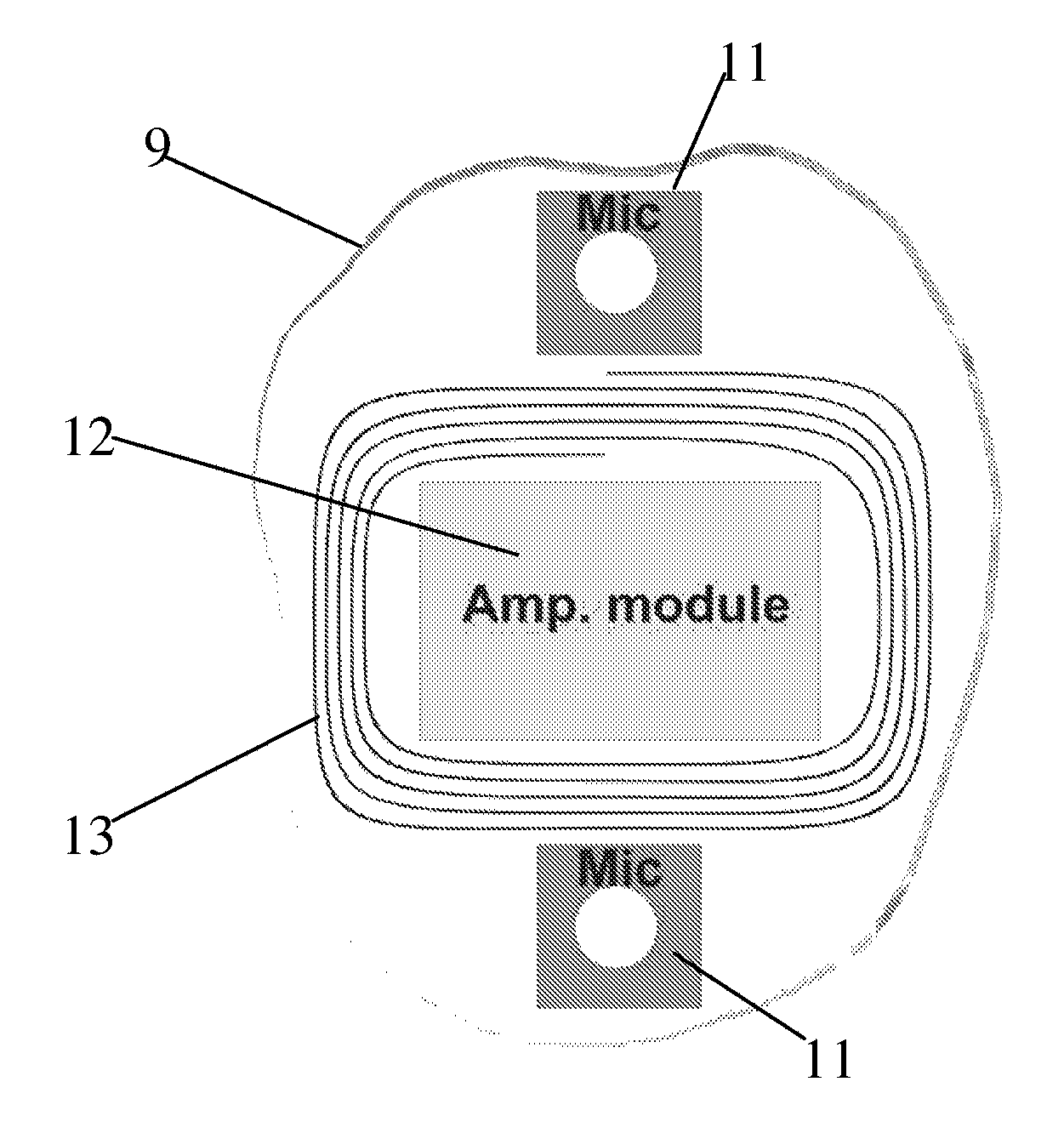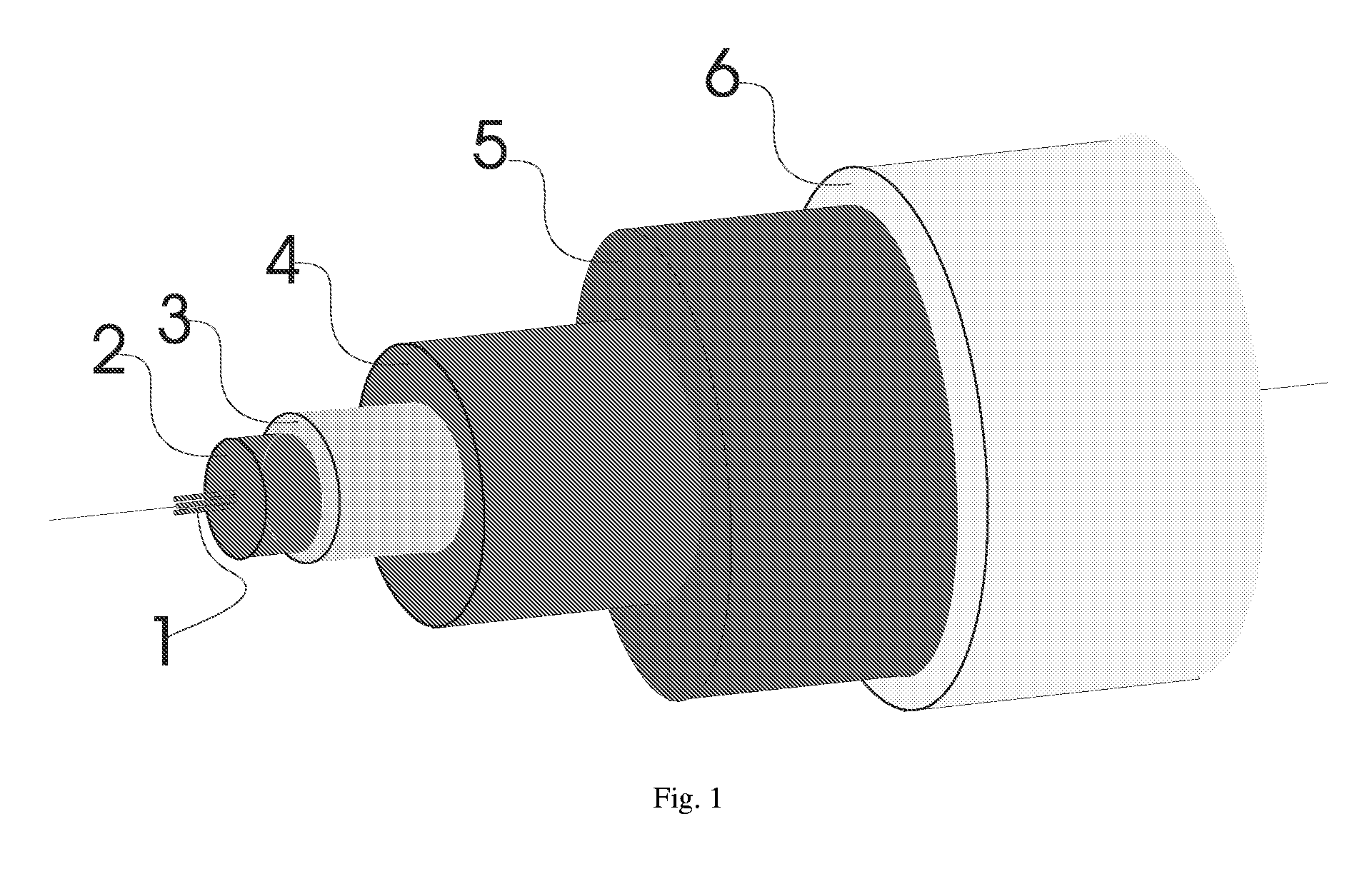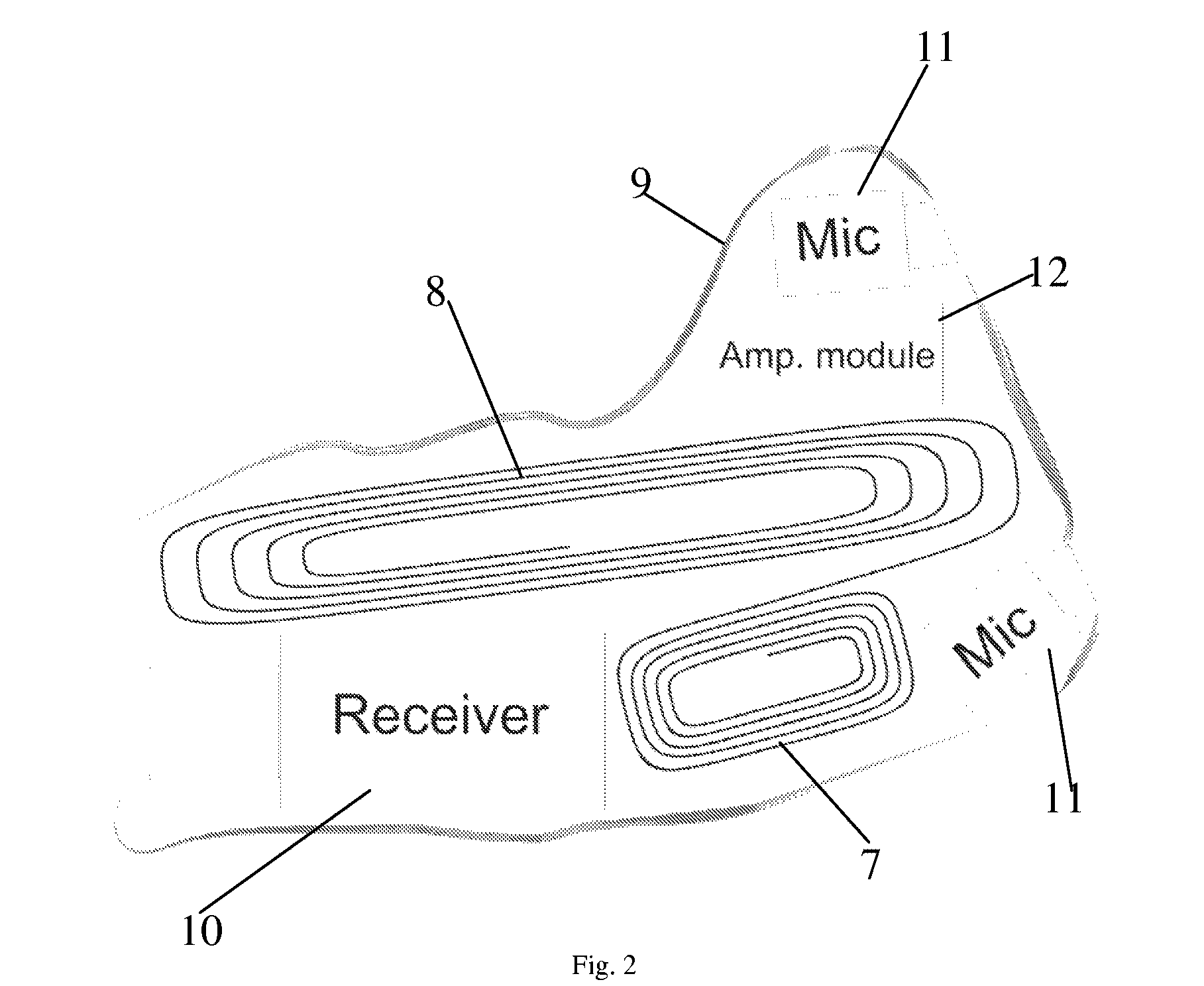Hearing Aid with Rechargeable Battery and Rechargeable Battery
a rechargeable battery and hearing aid technology, applied in the direction of cell components, wound/folded electrode electrodes, sustainable manufacturing/processing, etc., can solve the problems of lack of true flexibility of the batteries currently available, inability to obtain a solution, and difficulty in realising the functions of the very limited space inside the hearing aid
- Summary
- Abstract
- Description
- Claims
- Application Information
AI Technical Summary
Benefits of technology
Problems solved by technology
Method used
Image
Examples
Embodiment Construction
[0030]The battery in FIG. 1 comprises a core part 1. Preferably the core 1 comprises one or several filaments of a conducting material. In a preferred embodiment the filaments are made of metal material. Other possibilities are metal coated filaments of eg. glass, polymer or carbon. This part of the battery is either anode or cathode current collector. In the following it is assumed that the filaments 1 functions as the cathode current collector. In a layer surrounding the filaments the cathode material 2 is provided. On top of the cathode an electrolyte material 3 is provided. The electrolyte covers the entire outer radial surface of the cathode material 2, and on top of the electrolyte layer the anode material 4 is supplied. The anode current collector 5 is the last active part of the battery and is provided on the anode material 4. The current collector 5 could be a metal layer which is provided on top of the anode 4, or metal filaments could be woven onto the anode 4. Also a com...
PUM
 Login to View More
Login to View More Abstract
Description
Claims
Application Information
 Login to View More
Login to View More - R&D
- Intellectual Property
- Life Sciences
- Materials
- Tech Scout
- Unparalleled Data Quality
- Higher Quality Content
- 60% Fewer Hallucinations
Browse by: Latest US Patents, China's latest patents, Technical Efficacy Thesaurus, Application Domain, Technology Topic, Popular Technical Reports.
© 2025 PatSnap. All rights reserved.Legal|Privacy policy|Modern Slavery Act Transparency Statement|Sitemap|About US| Contact US: help@patsnap.com



